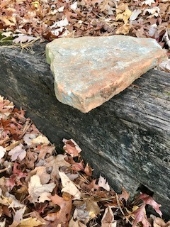
 1
1




 3
3




If there is one thing the Wizard of Oz has taught me, it is not to trust school teachers on bicycles.
 1
1




Invasive plants are Earth's way of insisting we notice her medicines. Stephen Herrod Buhner
Everyone learns what works by learning what doesn't work. Stephen Herrod Buhner




If there is one thing the Wizard of Oz has taught me, it is not to trust school teachers on bicycles.




Invasive plants are Earth's way of insisting we notice her medicines. Stephen Herrod Buhner
Everyone learns what works by learning what doesn't work. Stephen Herrod Buhner
 5
5




 4
4




Visit Redhawk's soil series: https://permies.com/wiki/redhawk-soil
How permies.com works: https://permies.com/wiki/34193/permies-works-links-threads
 2
2




John Daley Bendigo, Australia The Enemy of progress is the hope of a perfect plan
Benefits of rainfall collection https://permies.com/t/88043/benefits-rainfall-collection
GOOD DEBT/ BAD DEBT https://permies.com/t/179218/mortgages-good-debt-bad-debt
 4
4




Glenn Herbert wrote:I agree that the first step is to talk (nicely) to the inspector. What is structurally sound and what meets local code have little to do with each other.
"You must be the change you want to see in the world." "First they ignore you, then they laugh at you, then they fight you, then you win." --Mahatma Gandhi
"Preach the Gospel always, and if necessary, use words." --Francis of Assisi.
"Family farms work when the whole family works the farm." -- Adam Klaus
 1
1




Even if you want to keep your trailer mobile for eventual relocation, there are lots of good ways to tie them down, and yet far too few people do so. With weather weirding all over the place, failing to do so can result in dead people and I always consider it bad enough if someone kills himself, but if his trailer crashes into a neighbor's and a child gets killed, I wouldn't want to be the one with that on my conscience.R Scott wrote:The rules vary wildly for mobile homes, from simply tying them down to prevent them from blowing away...
Visit Redhawk's soil series: https://permies.com/wiki/redhawk-soil
How permies.com works: https://permies.com/wiki/34193/permies-works-links-threads










|
This tiny ad is guaranteed to be gluten free.
The new gardening playing cards kickstarter is now live!
https://www.kickstarter.com/projects/paulwheaton/garden-cards
|
.jpg)




